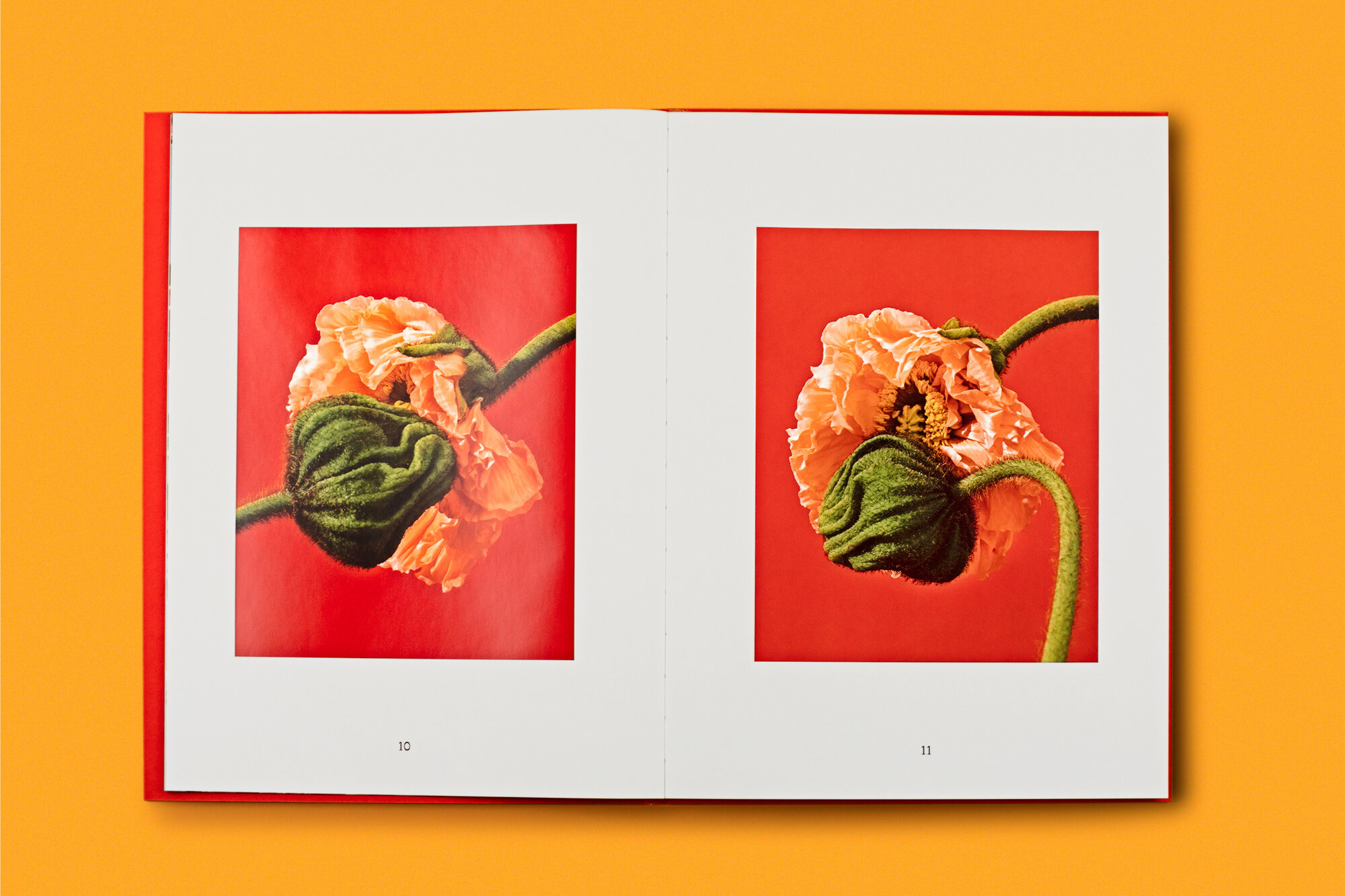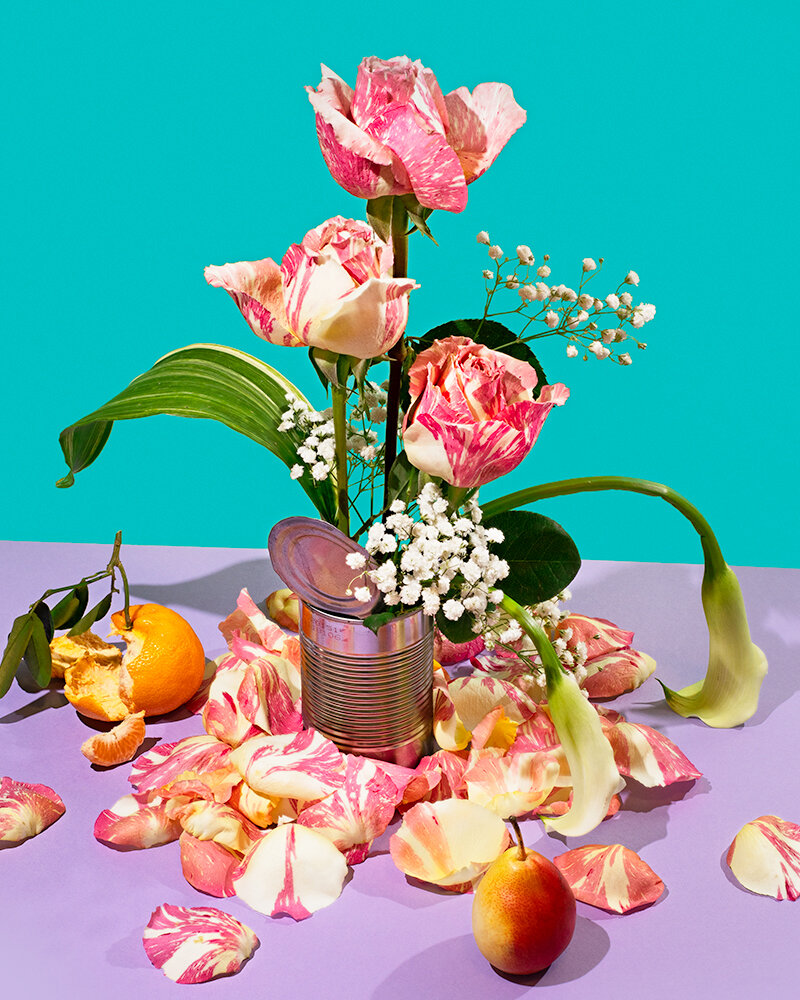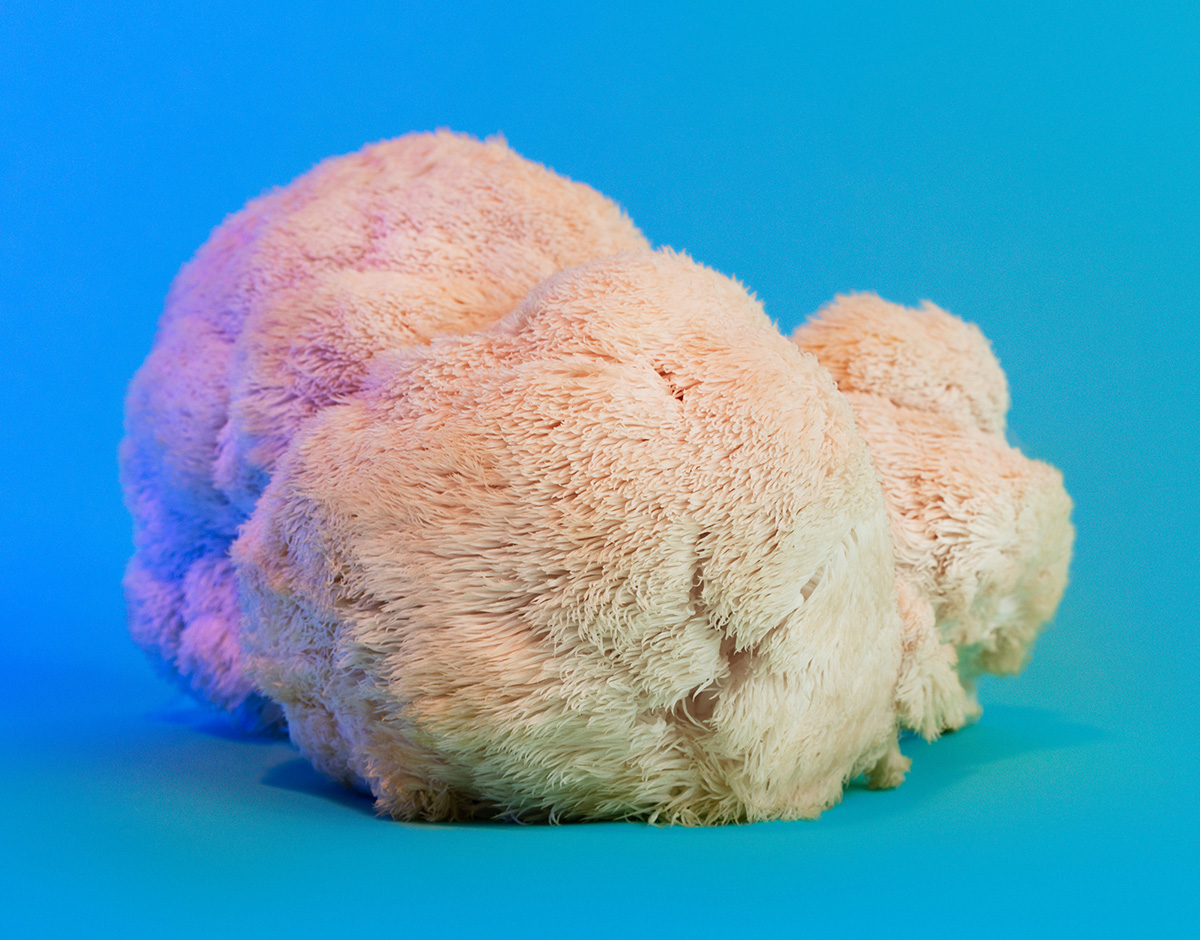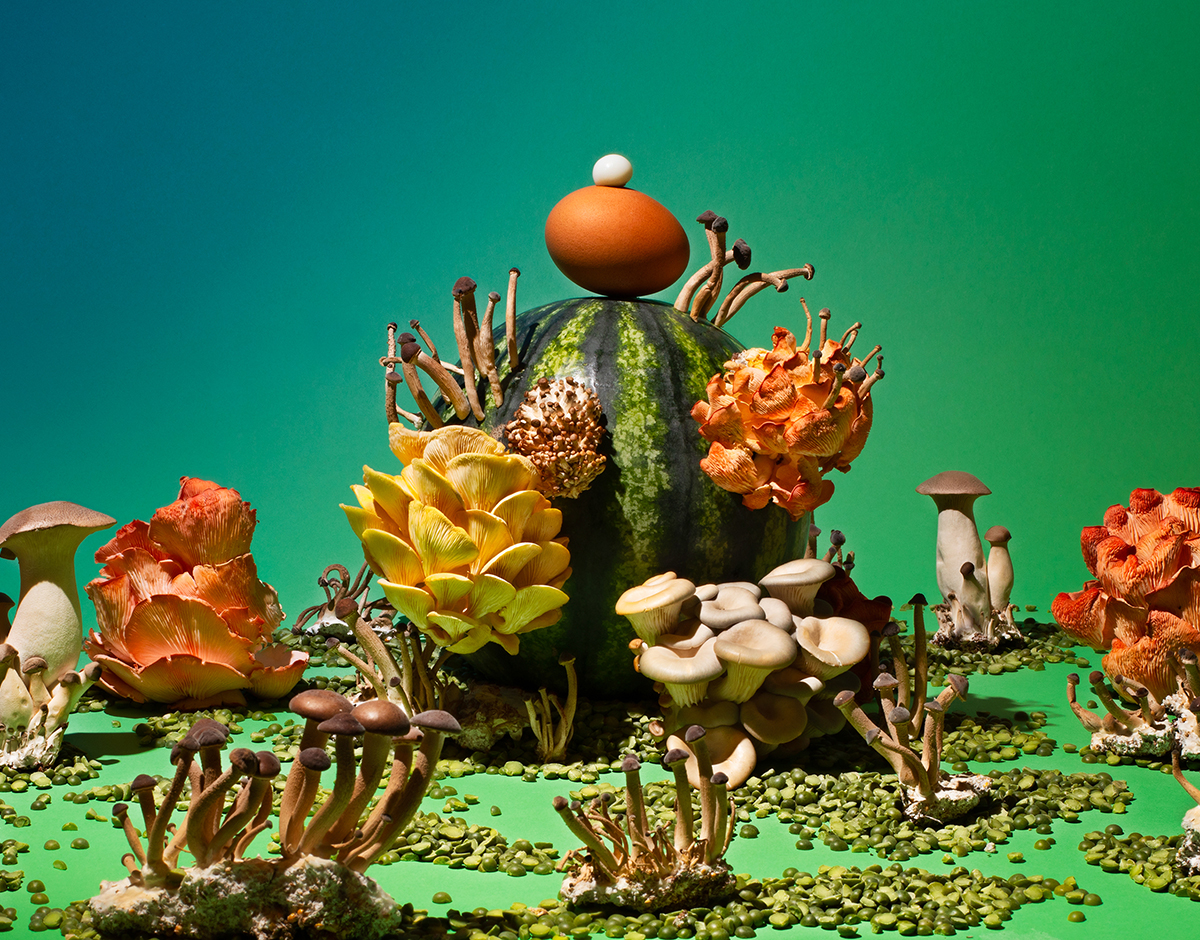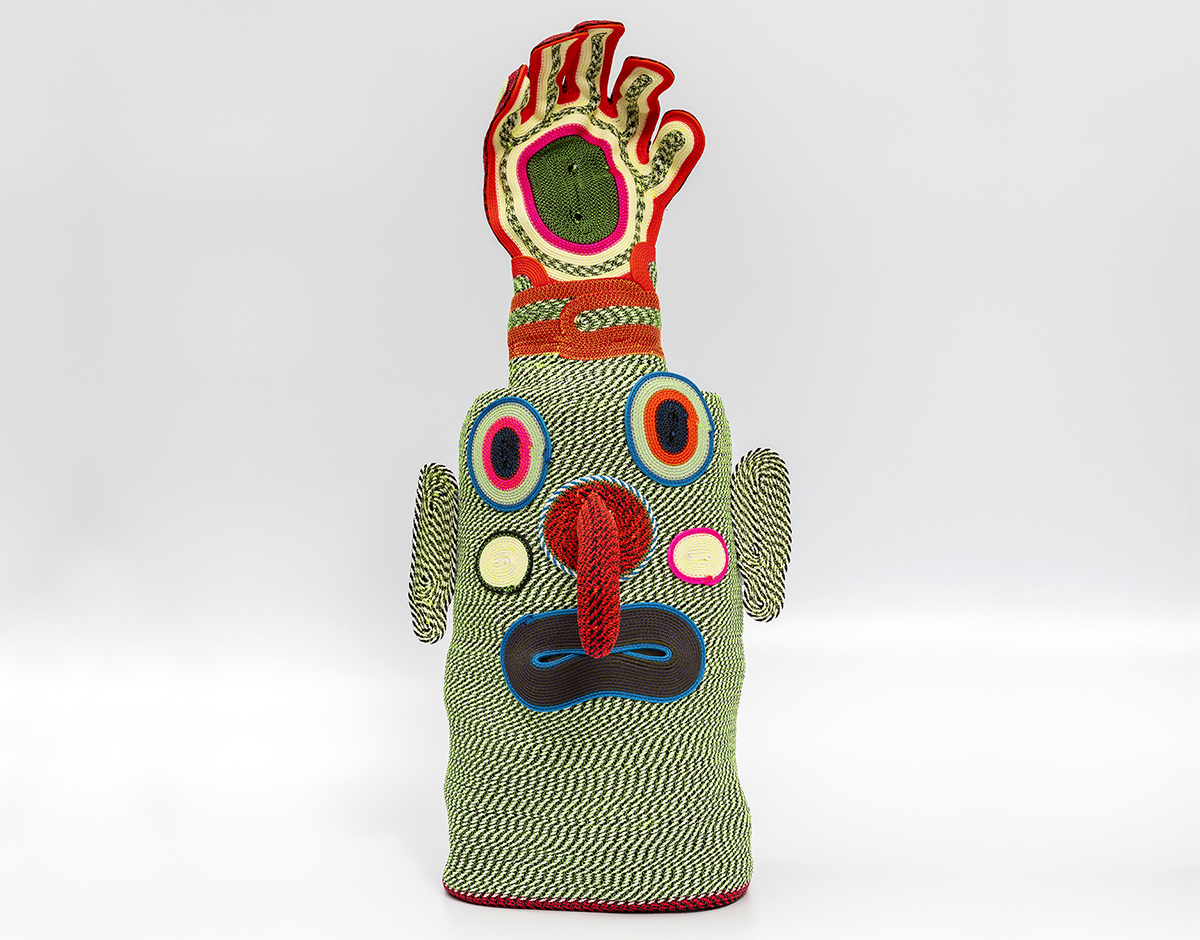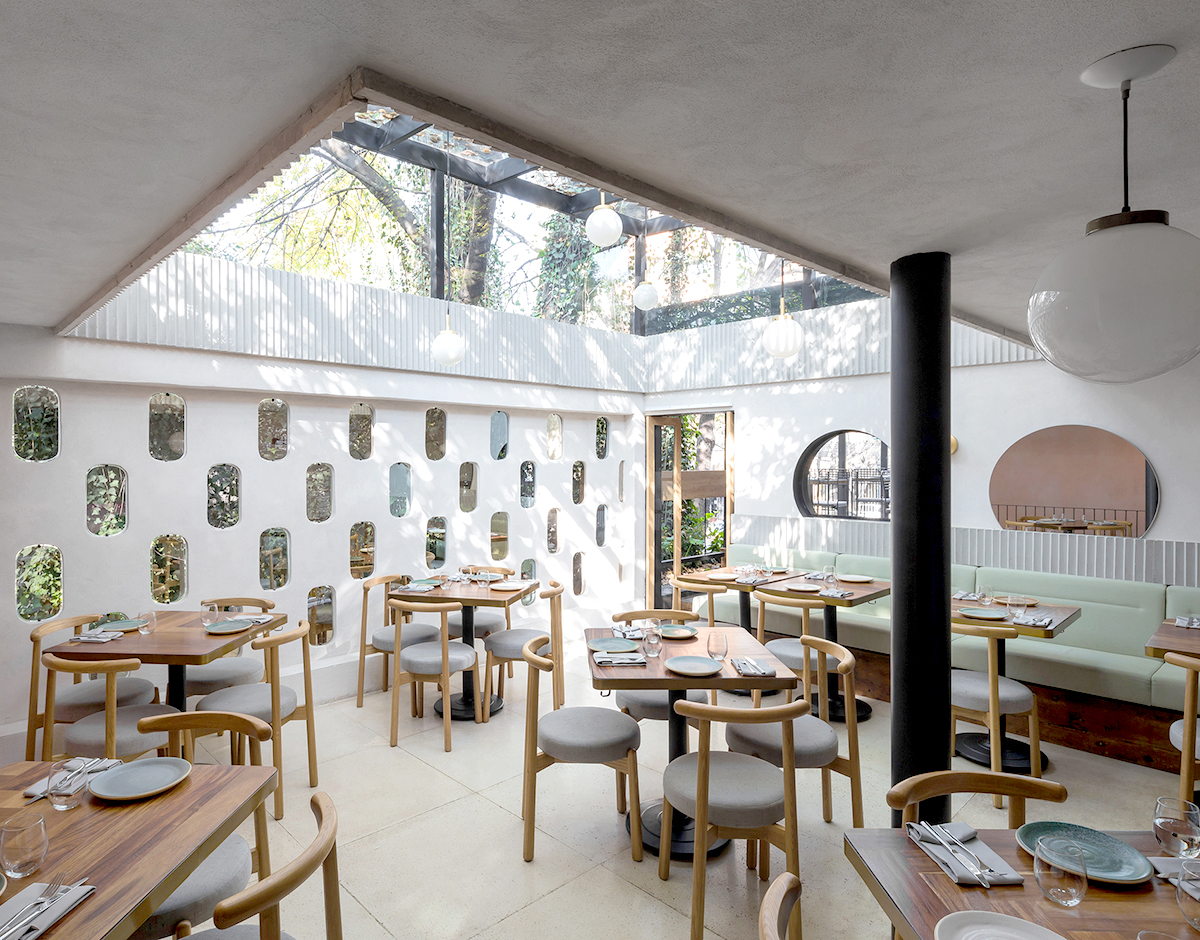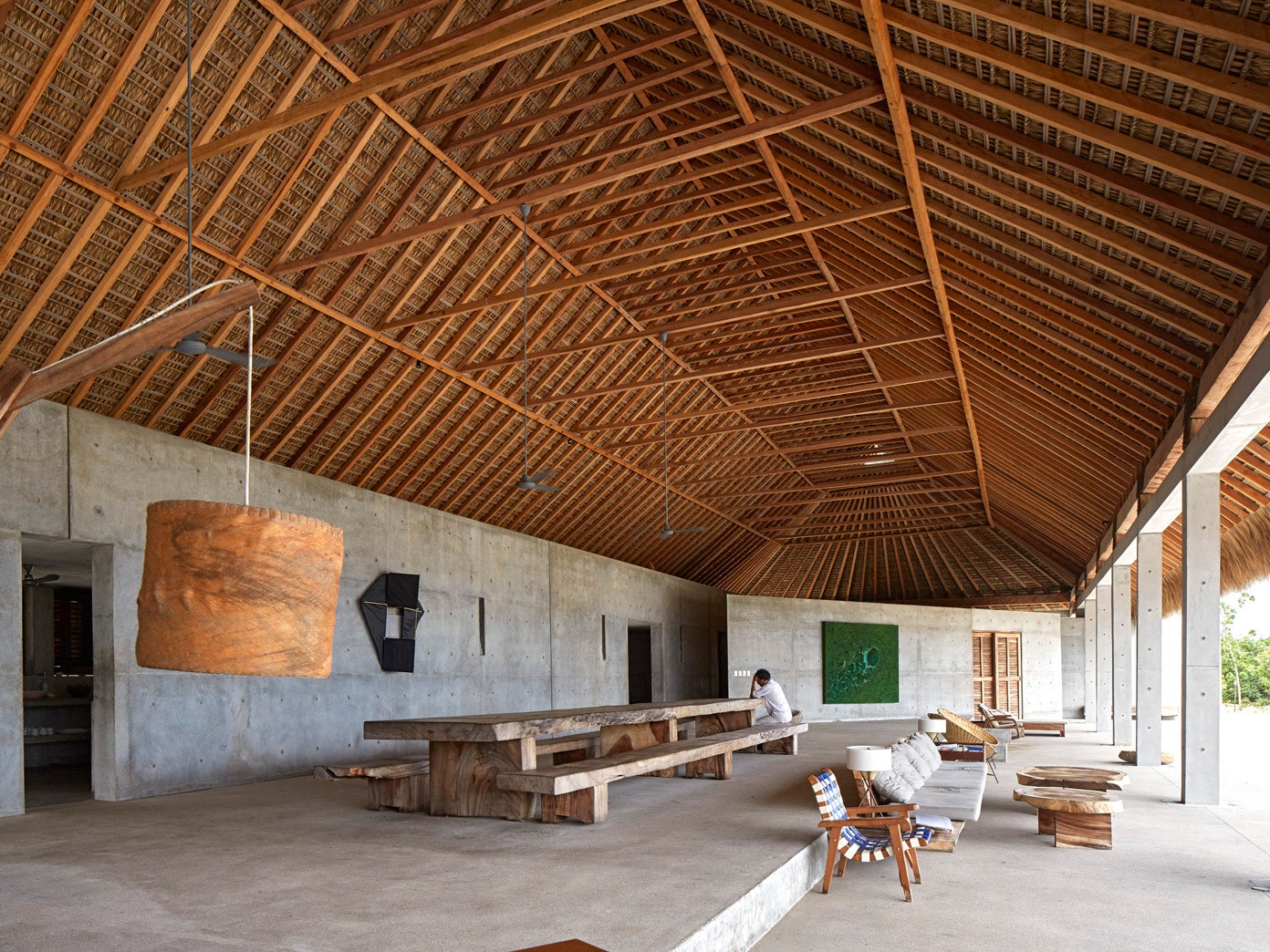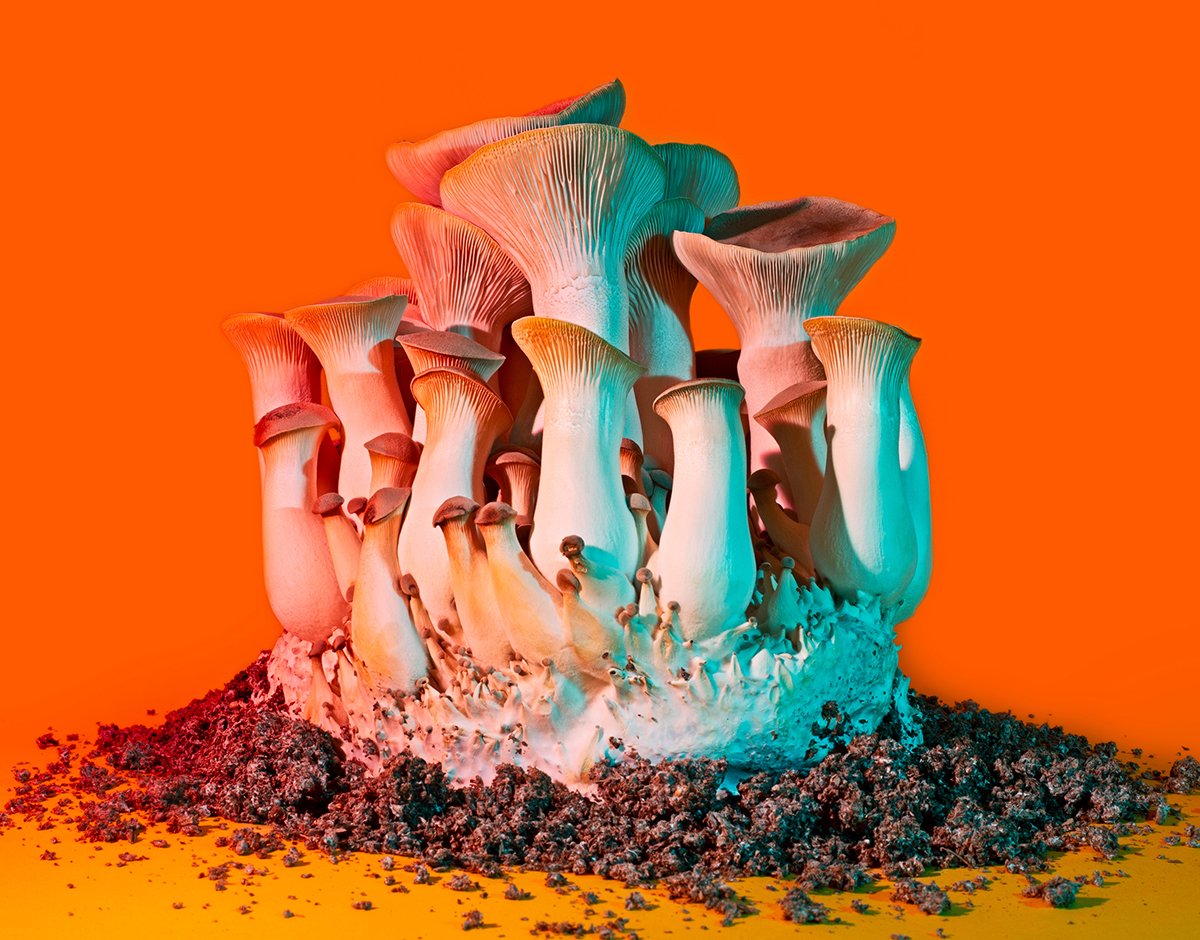
10.05.20
Q+A
The Fantastical Fungi (And Other Subjects) of Phyllis Ma’s Supernatural Still Lifes
Photographer and animator Phyllis Ma’s work is centered around what she calls “special nothings:” ordinary objects that, in the right context, can appear “magical, surreal, or even uncanny.” Fuzzy flowers nuzzling each other, a block of aspic the exact dimensions of an iPhone, a phallic gherkin covered in warty bumps — all resplendent in hyper-stylized settings and hyper-saturated hues — are just some examples of her otherworldly still-life photographs, which are heavily influenced by the foods she finds in markets around New York.
Recently, Ma — who was born in China and immigrated to Brooklyn when she was eight — turned her lens on the mushroom kingdom, which is the subject of her ‘zine series, Mushrooms & Friends, currently in its second edition, with a third on the horizon. “When I’m photographing a mushroom still life, it’s both a focused study and a playful experiment,” she says. “As an artist, I get to break some rules of mycology. I rearrange the mushrooms into fantastical landscapes and portraits based on my intuitions. The mushrooms remind me that it’s just as important to play and feel as it is to analyze and dissect.”
This month, the Columbia University graduate releases her latest book, Special Nothing, a collection of still lifes created in Mexico City, Berlin, London, Tokyo, and New York from 2018-2019. A collaboration with Houman Momtazian of London design studio Ongoing Projects, she describes it as the “most spontaneous project I’ve ever done, and yet, ironically, the one that’s required the most planning.”
The twists and turns of 2020 have only served to inspire Ma’s work in new ways, encouraging her to engage with her community by starting a mask-making group with artist friends, and to think more deeply about the sustainability of being a working artist living in New York. We chatted with her via email to learn more about her process, motivation, and her ongoing infatuation with mycology.
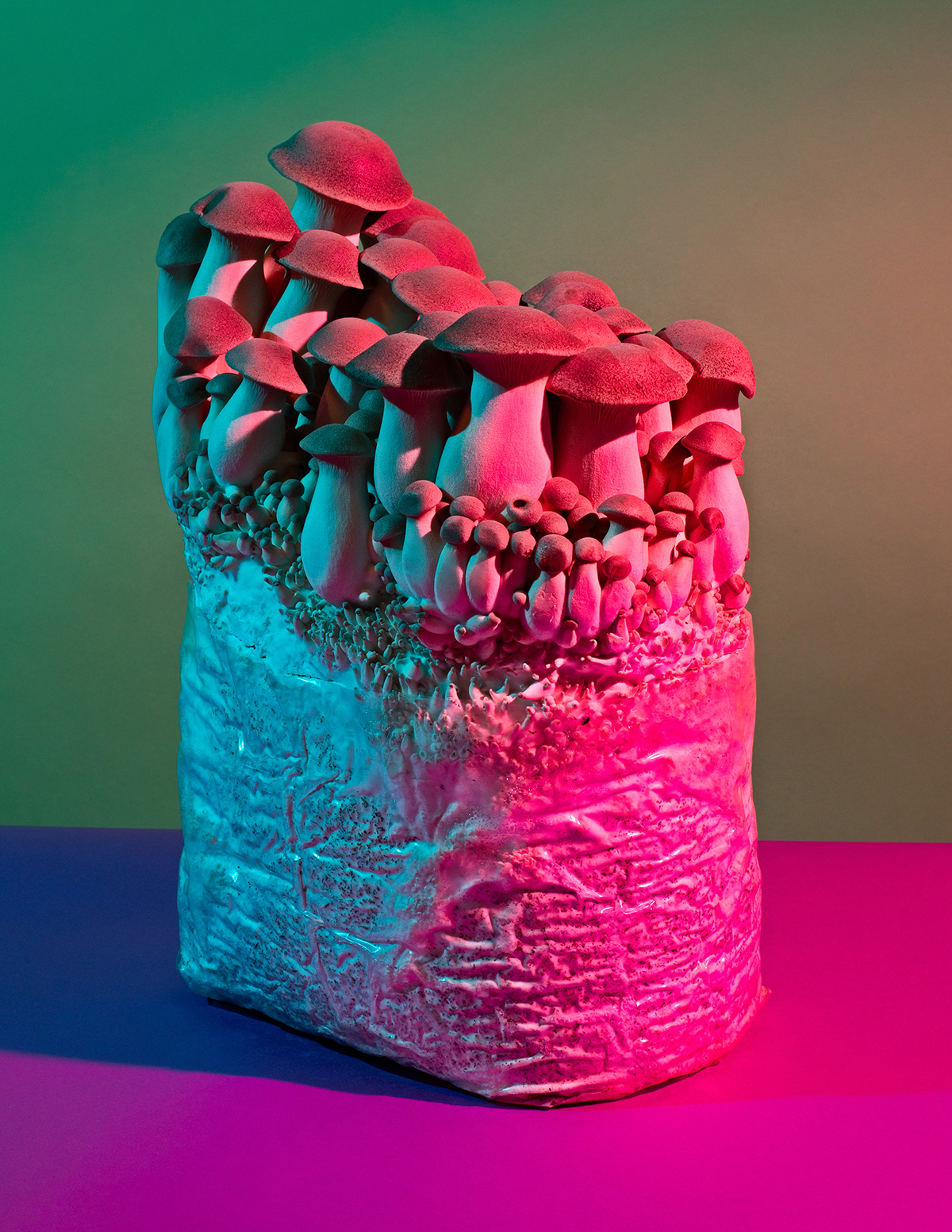
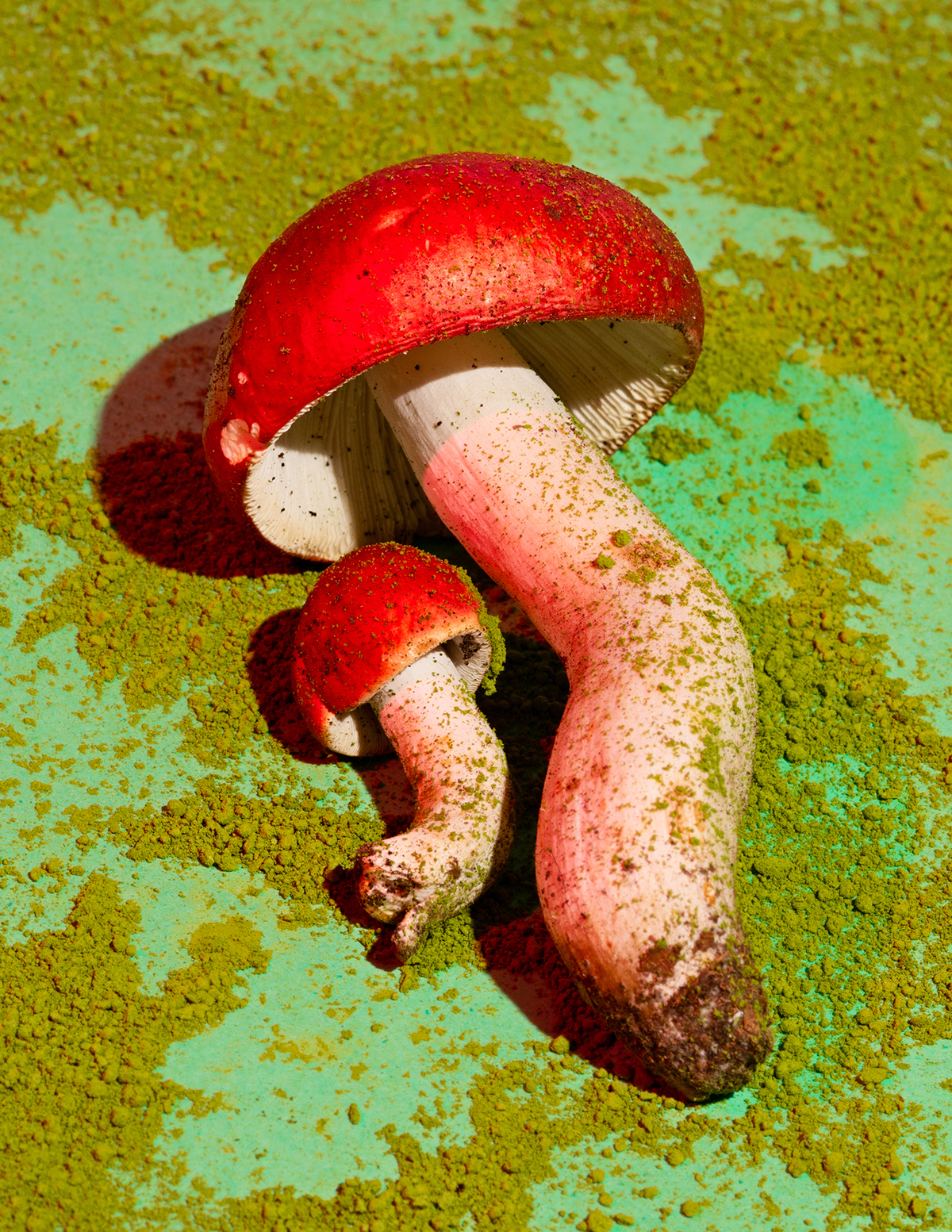
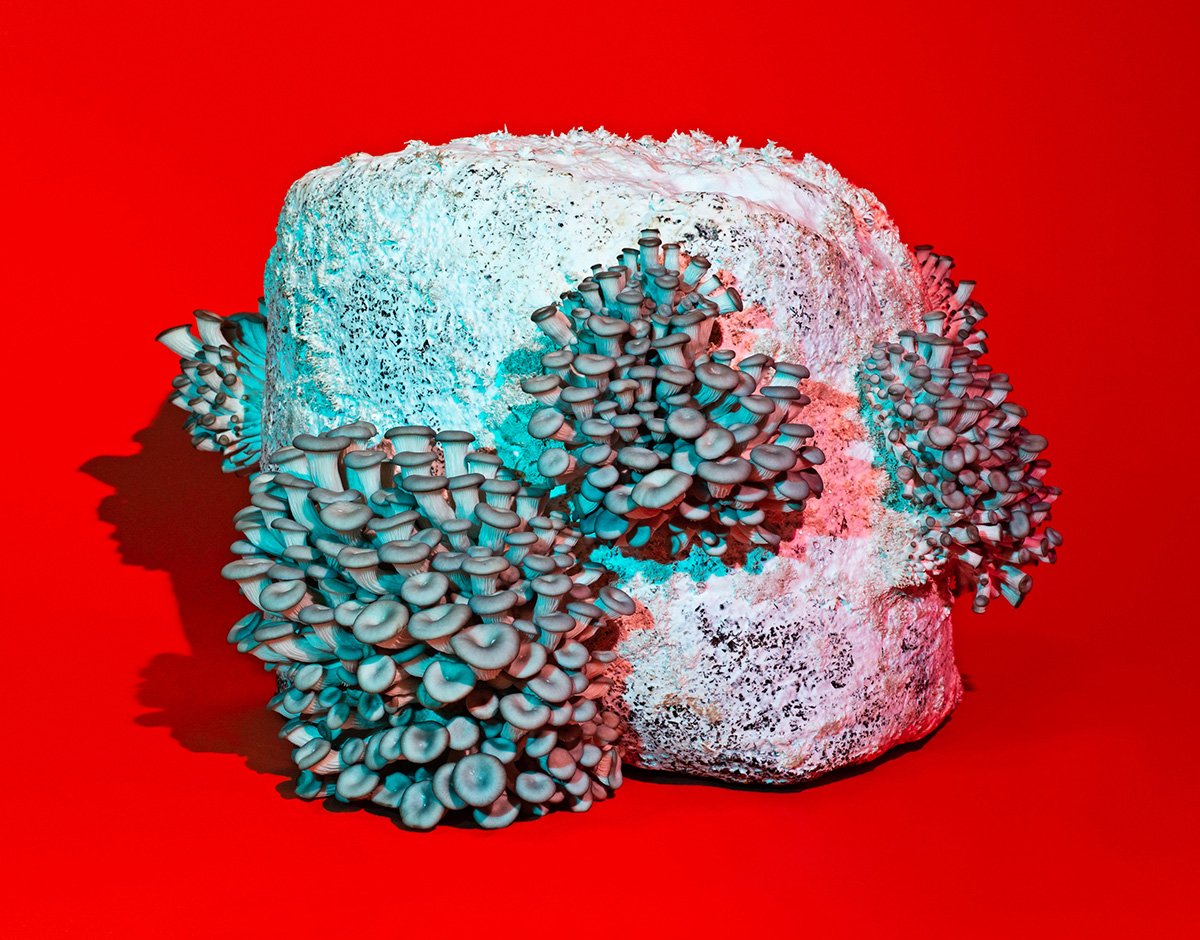
What drew you to photography?
It kind of happened by accident. I didn’t study photography formally but learned different techniques through YouTube tutorials. In 2014, a college friend and I started a joke food Instagram account, Lazy Mom, poking fun at the food photo trend. It was very popular to post beautifully-plated, expensive meals with hashtags, but Lazy Mom pushed against that ideal by creating still lifes with cheap, processed foods like hot dogs, Easy Cheese, and Jell-O. Ironically, the account went viral and I ended up getting real commercial gigs as a food stylist and photographer.
How does living in New York shape your work?
Living in New York means being exposed to different cultures all the time. It’s my favorite thing about living here. In my neighborhood of Ridgewood, Queens, the community is from many different backgrounds — Eastern European, Latinx, Nepalese, Chinese, and Egyptian, to name a few. With so many cultures comes an amazing variety of food, too.
Do you have a specific process when approaching a photography project?
It always starts with finding an object that catches my eye. It could be a bright purple Cortinarius mushroom growing on dead leaves, a gelatin cake in Mexico City, or a tropical flower that I’ve never seen before. I take in the object and build a scenario around it. Sometimes, the object becomes a part of a larger landscape, and sometimes, it becomes an anthropomorphized character. A recurring arrangement I use is that of two mushrooms — one large and one small —snuggling closely, like mother and child. Then, I complete the image by filling in the frame with other props (whatever I can find around me) to build a mood. I like using fruits and vegetables from my kitchen and flowers from the local bodega. It’s always important to minimize waste and work as sustainably as possible.
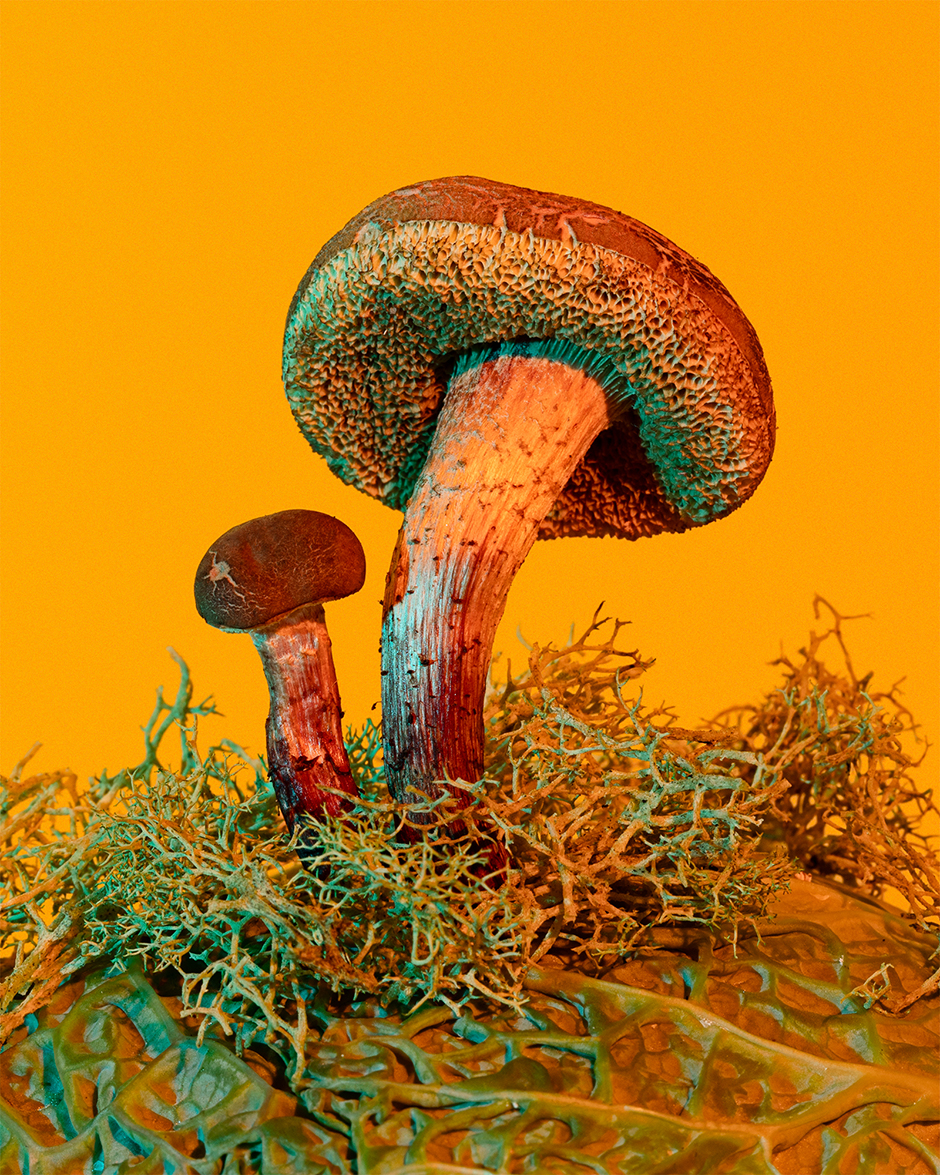
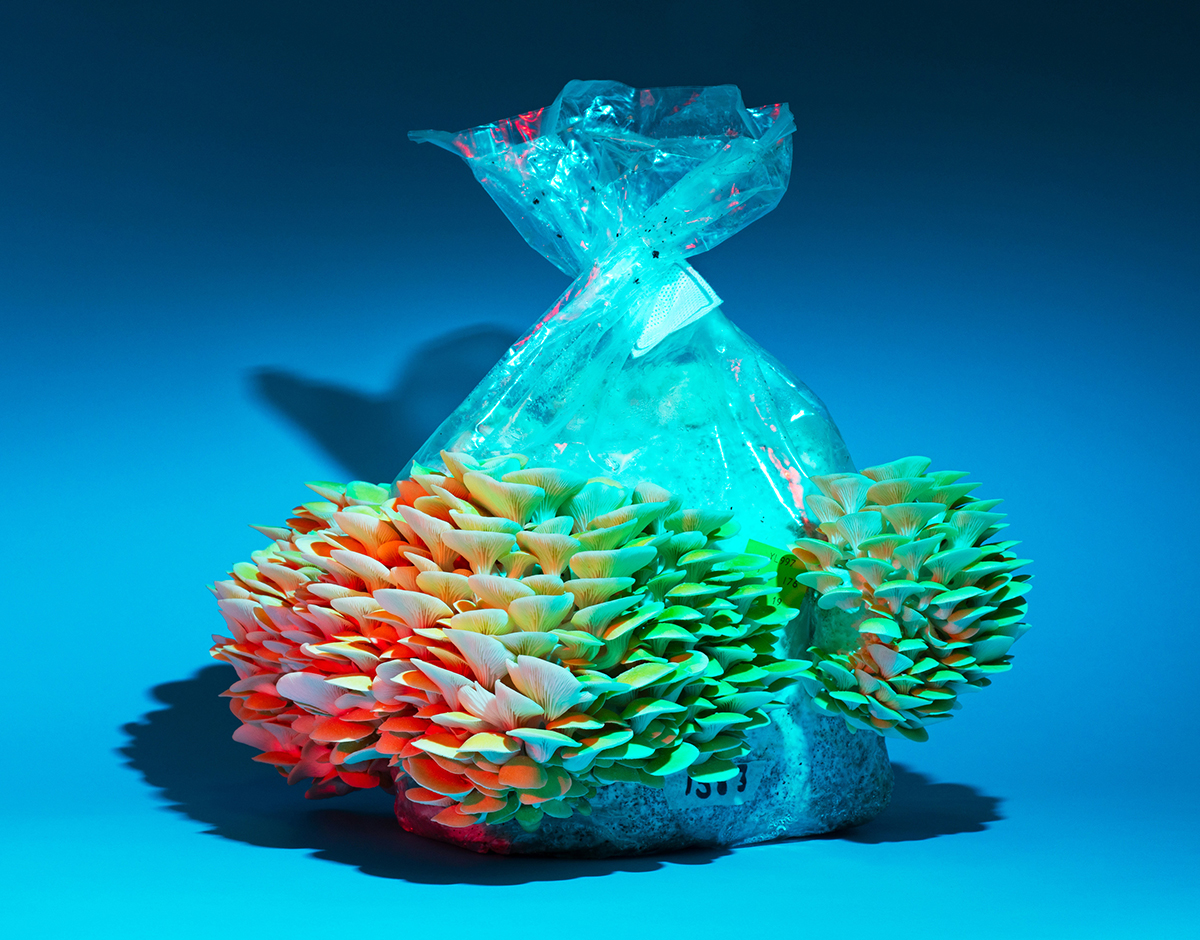
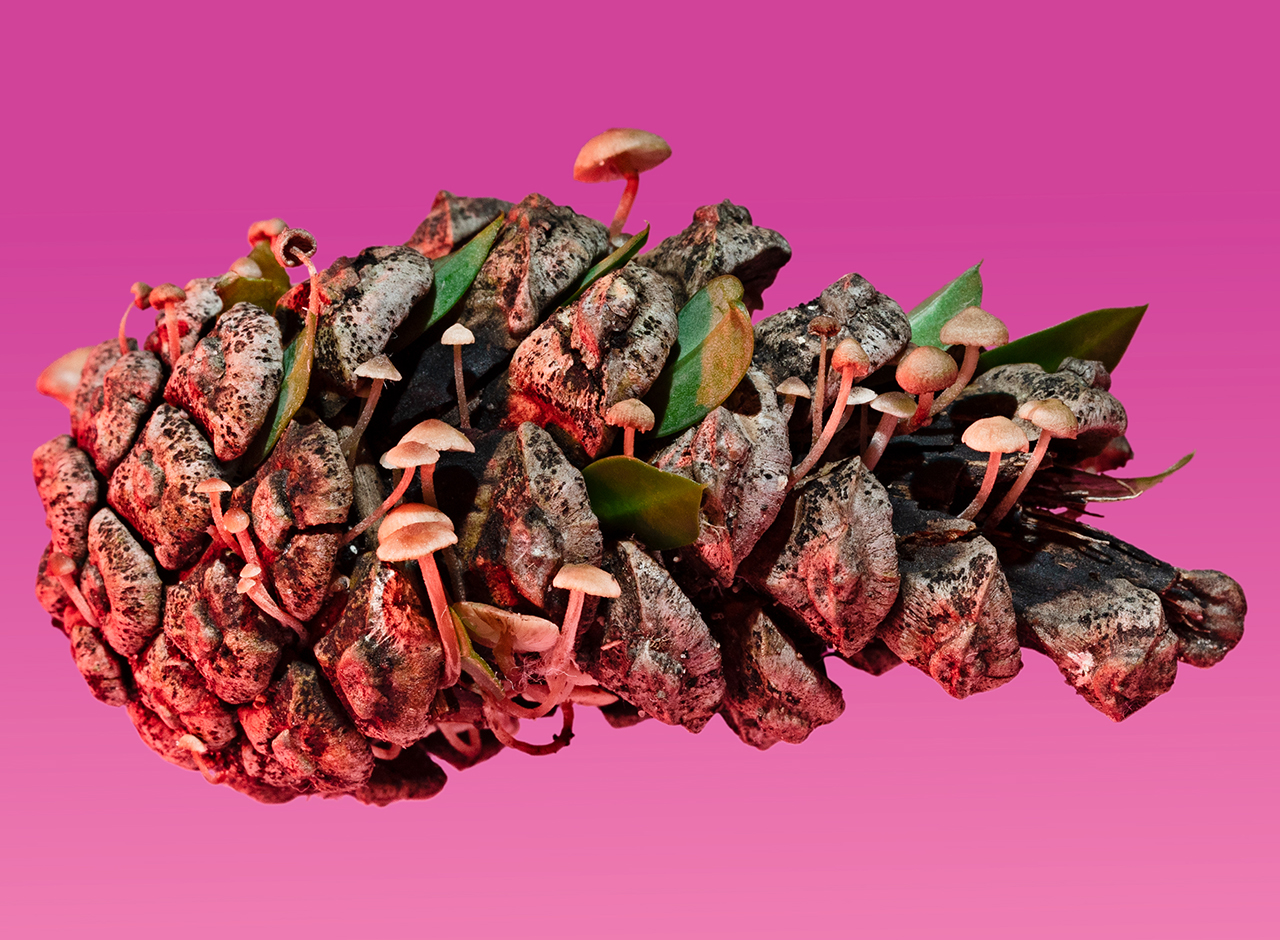
What prompted your interest in foraging and photographing mushrooms?
Last year, I wanted to focus my work more toward sustainability, and mushrooms were a natural subject. The opportunity came when I visited Smallhold, a mushroom farm in the Brooklyn Navy Yard. I was immediately captivated by the blocks and blocks of mushrooms growing under blue light. At the same time, I started foraging outdoors and learning about fungi in general. It’s fascinating how important they are to recycling and ecology, not to mention the obvious: mushrooms are incredibly beautiful and fun to photograph.
How did you discover Smallhold?
When I first reached out to Smallhold, the founders Adam DeMartino and Andrew Carter were excited by my work and invited me for a visit. I loosely explained that I wanted to make some weird mushroom still lifes and they completely trusted my vision, which was really flattering. It’s nice to collaborate with people who believe in my intuition because it’s an essential driving force for my work. I’ve been friends with them and other members of the Smallhold team ever since, united very much by our collective enthusiasm for fungi.
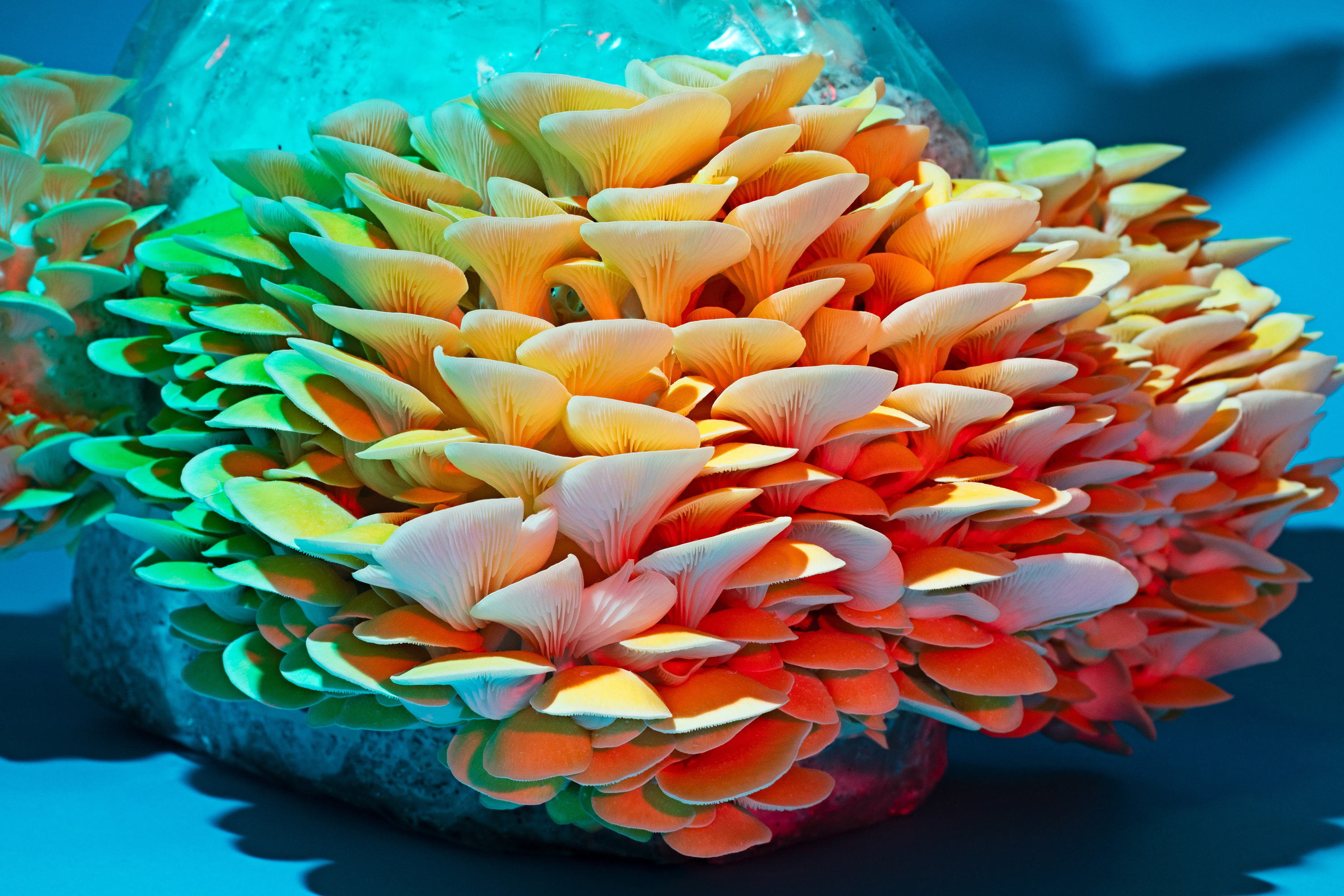
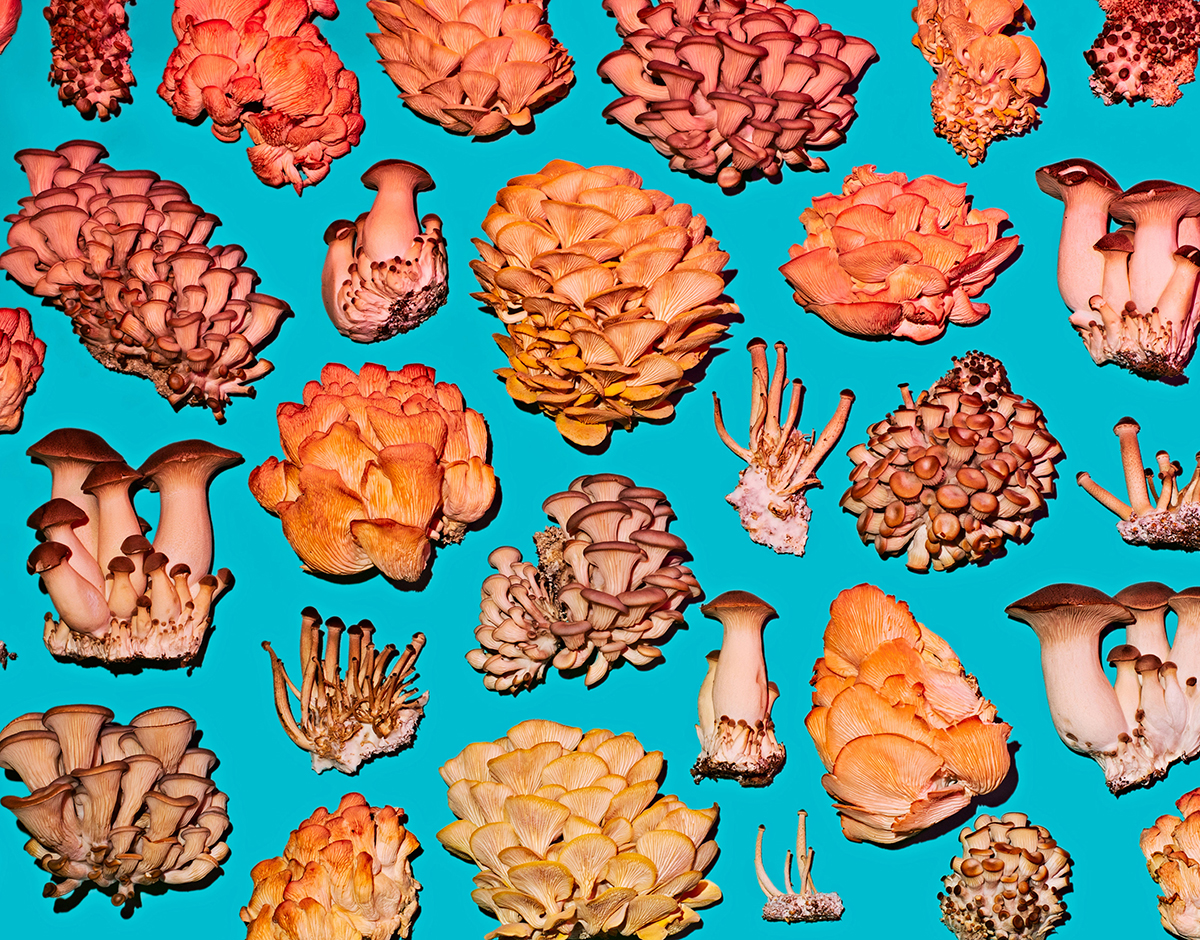
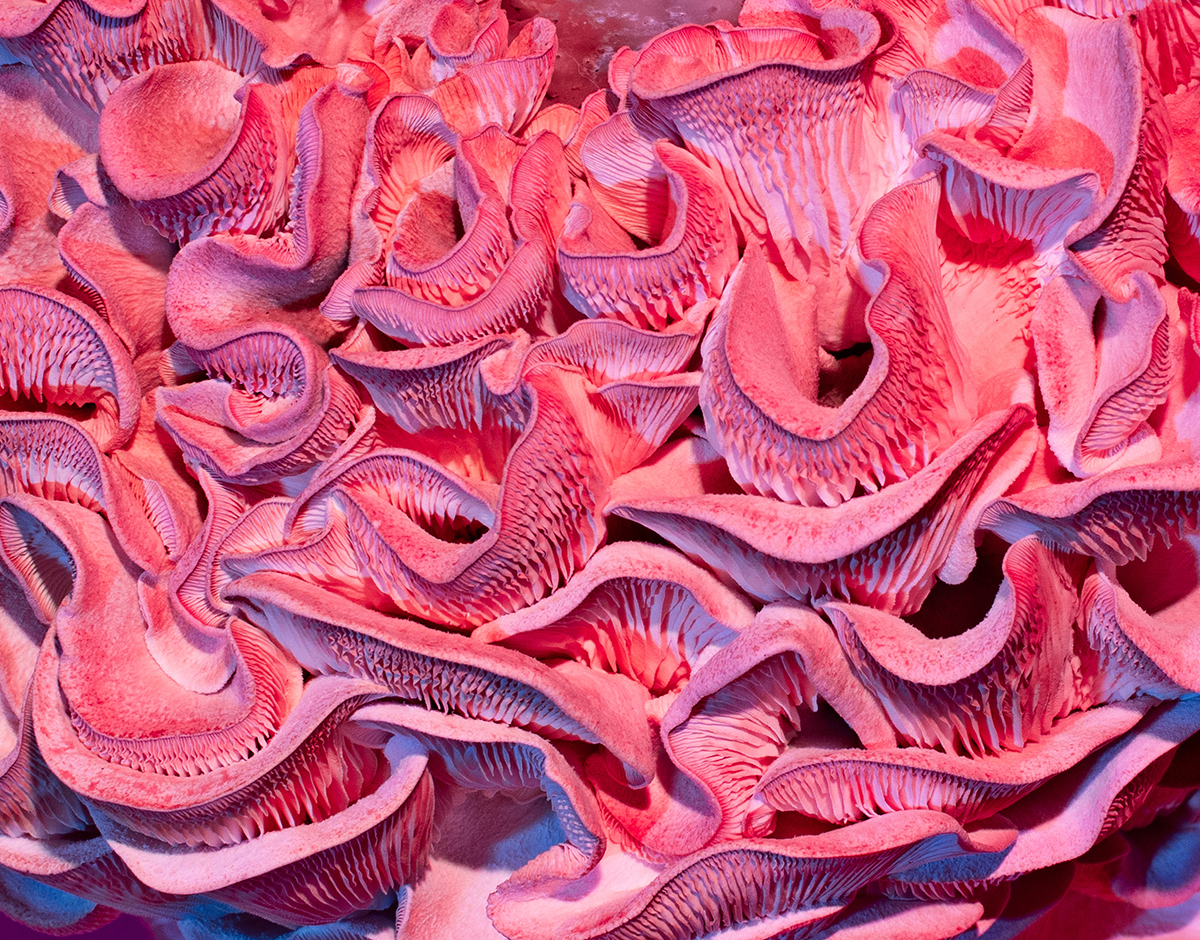
Mushrooms and mycology appear to be having a moment right now…
Mycology is a relatively young field that was lumped into botany for a very long time. In reality, mushrooms are more closely related to humans than to plants. It’s fun to be involved with an emerging science because there’s a lot of opportunities for collaboration and creativity, especially from amateurs. Personally, mushrooms teach me new ways of seeing. When I’m foraging, I notice more details, whether I’m walking down the sidewalk or taking a hike, which can often stretch a short hike into an all-day activity. As an artist inspired by mycology, I’ve found an interesting feedback loop happening between art and science. The science inspires the art, and the art inspires me to learn more about the science.
Tell us about your ‘zine series, Mushrooms & Friends.
I started Mushrooms & Friends about a year ago. A mix of cultivated and foraged mushrooms are used to construct surreal still lifes on bright color backgrounds. Sometimes, fungi are shown in macroscopic details, and sometimes, they’re presented as extraterrestrial landscapes. The first issue prominently features mushrooms from Smallhold. There are gourmet varieties—Lion’s Mane, Pioppino, pink, blue and yellow oyster—growing out of blocks of substrate (“food” for the mushrooms that’s made of sawdust). The second issue features more unusual mushrooms–spongy, stalk-less and club-like specimens–found in Brooklyn’s Greenwood cemetery as well as parks and forests around Berlin.
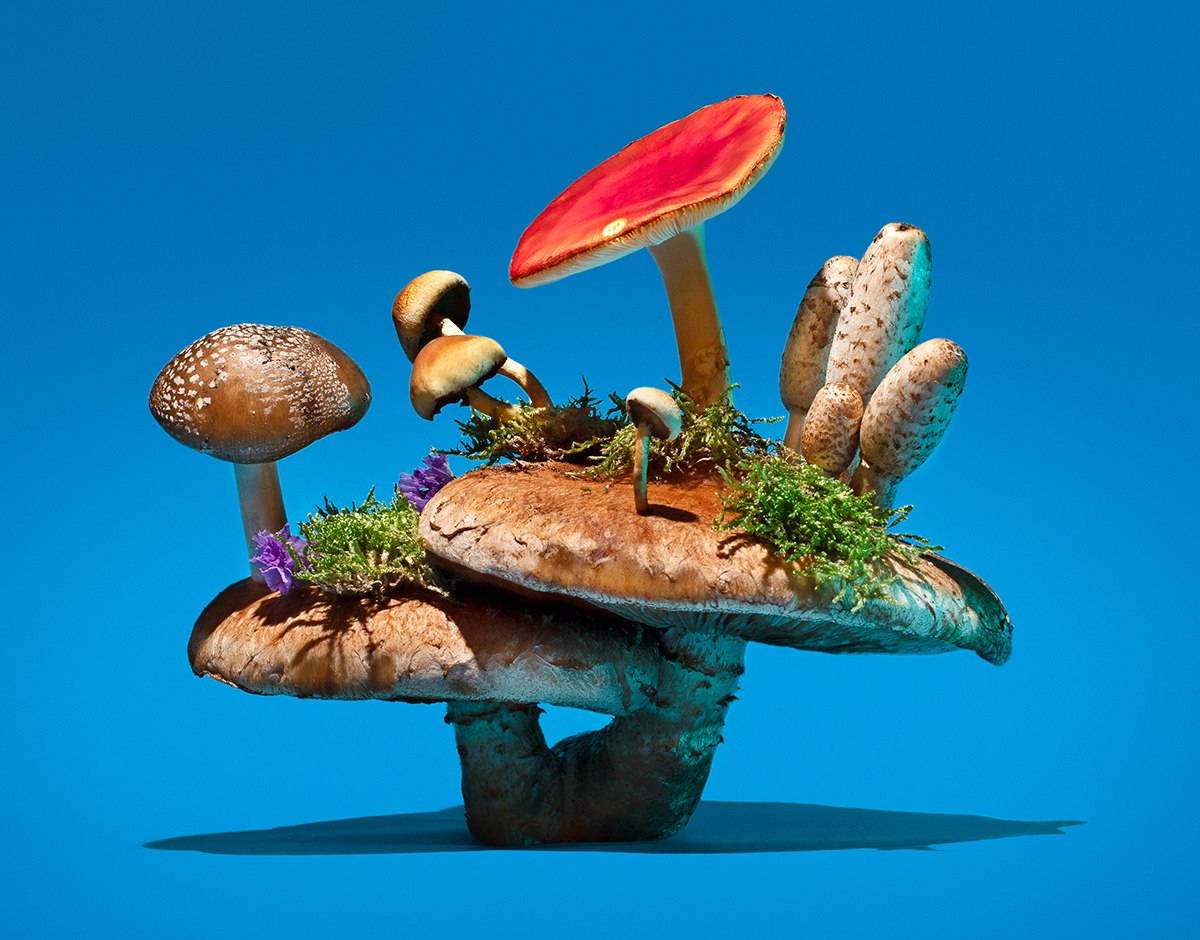
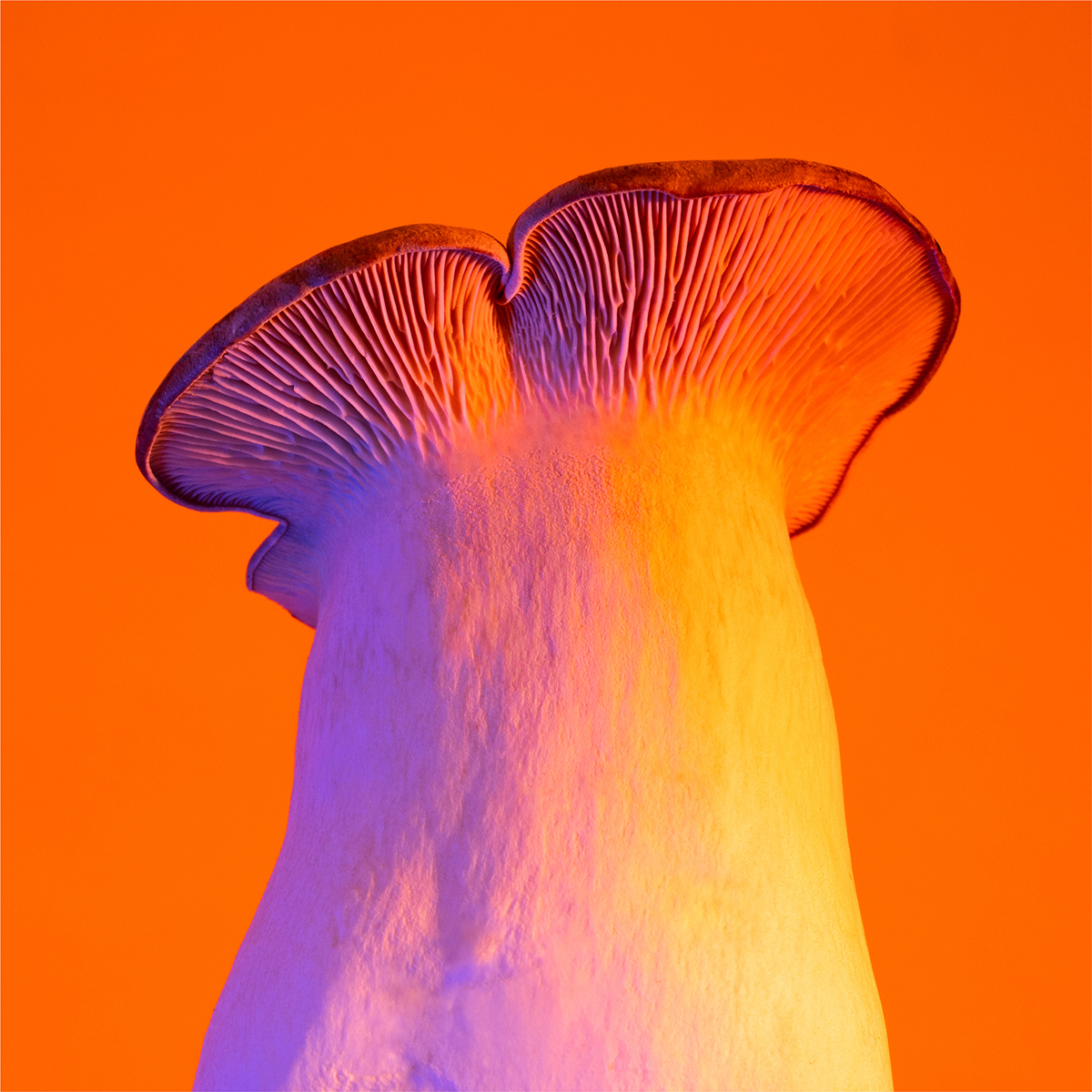
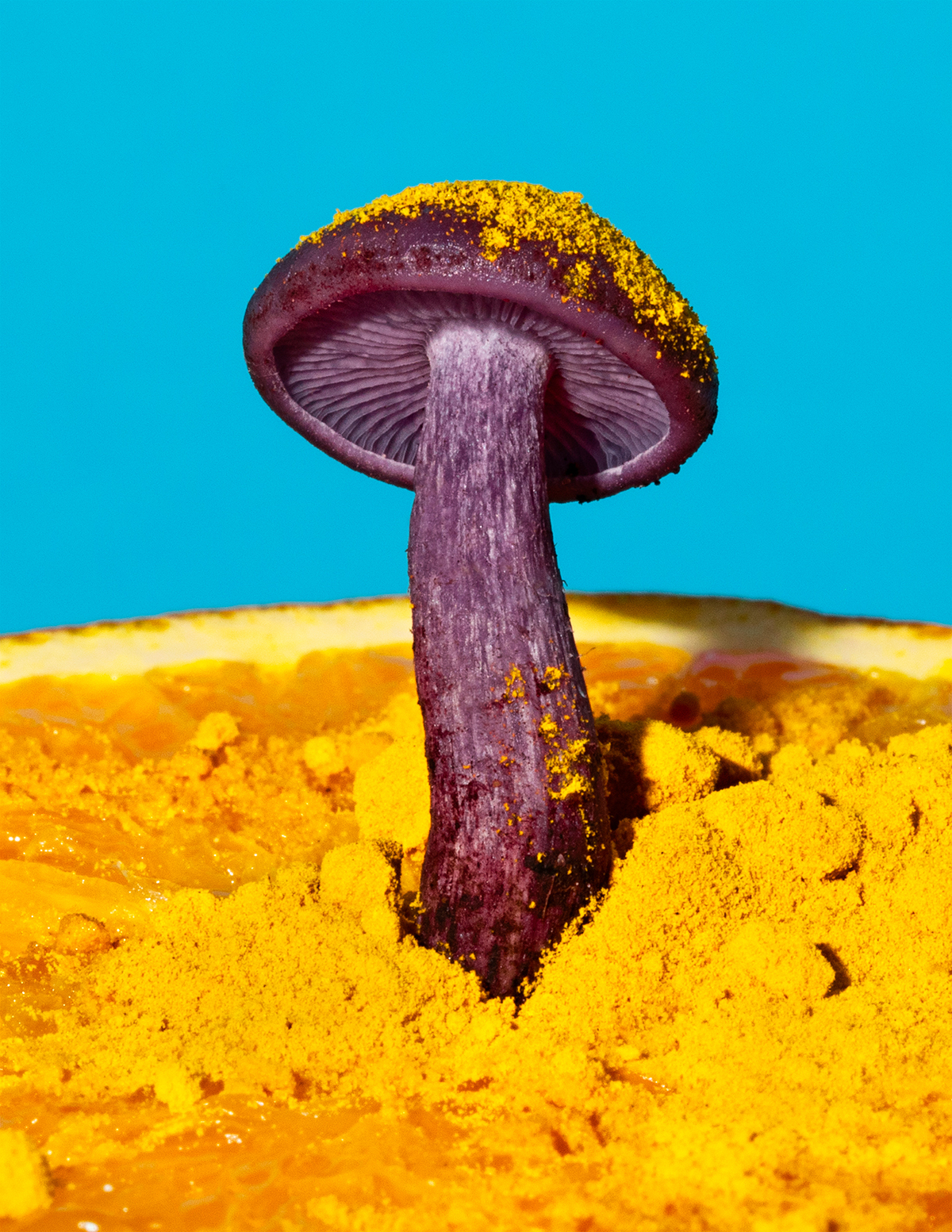
Who and what else influences your work?
I love vintage mushroom books and cookbooks. Last year, I visited Switzerland with my partner (who is Swiss), and I found the most beautiful mushroom book in his dad’s attic. The title is, simply, Champignons, and it was printed in Zurich in the 1970s. The colored plates show gilled and non-gilled fungi in painterly photo collages that are both psychedelic and informative—qualities that I strive for in my own photos. Another favorite is the CCCP Cook Book, a book of Soviet cuisine from the 1930s. It includes all kinds of recipes showcasing the ingenuity of common citizens in a time of food rationing. Some dishes include aspics (savory jello) that are set outside in minus temperatures, and okroshka, a traditional dish with chopped mystery ingredients —very convenient for disguising meat shortages. The determination of the recipes to create something special out of nothing, and to do it with humor, resonates deeply with my work.
How has the experience of 2020 affected your work and your worldview?
2020 has been a time of deep learning for me. The pandemic reaffirmed the importance of community and collaboration. As an artist, I don’t need to be constantly making artwork; I don’t stop being an artist just because I have less output. It’s just as important and valuable to engage with my community. One of the most rewarding and effective actions was mobilizing a mask-making group (Mask Off) with other local artists. To date, we’ve sewed around 2,000 fabric masks and donated them to hospitals, shelters, and Indigenous communities in North Dakota and Upstate New York. More recently, I organized a special project in Mexico where masks were fabricated in Mexico City and then donated to the Mazatec community in Oaxaca. In addition to [responding to] a public health emergency, the mask project was motivated in part by the issue of artists being the catalysts for gentrification. Real estate brokers target artists to be first wave gentrifiers, making neighborhoods more palatable for wealthier and wealthier tenants to move in. This is happening in New York and cities around the US as low income tenants are being evicted. Artists have the responsibility and the power to engage with the local community that they are displacing. I say this as a gentrifier myself, despite being an immigrant who grew up in Brooklyn.
What are you working on next?
My new book, Special Nothing is a unique travel diary in the form of objects, mostly food and flowers. I collaborated with a few friends throughout the project. Houman Momtazian, who runs design studio Ongoing Projects in London, designed all aspects of the book. And Erin Sheehy wrote a poignant introductory essay that synthesized all my ideas and inspirations from my travels. Currently, I’m in the slow process of creating photos for Mushrooms & Friends 3. It’s bad luck to rush the mushrooms. They’ll let me know when the zine is ready.
